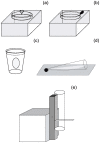Tracking changing environments: innovators are fast, but not flexible learners
- PMID: 24391981
- PMCID: PMC3877343
- DOI: 10.1371/journal.pone.0084907
Tracking changing environments: innovators are fast, but not flexible learners
Abstract
Behavioural innovations are increasingly thought to provide a rich source of phenotypic plasticity and evolutionary change. Innovation propensity shows substantial variation across avian taxa and provides an adaptive mechanism by which behaviour is flexibly adjusted to changing environmental conditions. Here, we tested for the first time the prediction that inter-individual variation in innovation propensity is equally a measure of behavioural flexibility. We used Indian mynas, Sturnus tristis, a highly successful worldwide invader. Results revealed that mynas that solved an extractive foraging task more quickly learnt to discriminate between a cue that predicted food, and one that did not more quickly. However, fast innovators were slower to change their behaviour when the significance of the food cues changed. This unexpected finding appears at odds with the well-established view that avian taxa with larger brains relative to their body size, and therefore greater neural processing power, are both faster, and more flexible learners. We speculate that the existence of this relationship across taxa can be reconciled with its absence within species by assuming that fast, innovative learners and non innovative, slow, flexible learners constitute two separate individual strategies, which are both underpinned by enhanced neural processing power. This idea is consistent with the recent proposal that individuals may differ consistently in 'cognitive style', differentially trading off speed against accuracy in cognitive tasks.
Conflict of interest statement
Figures



References
-
- Kummer H, Goodall J (1985) Conditions of Innovative Behaviour in Primates. Philos T Roy Soc B 308: 203–214.
-
- Sol D, Stirling DG, Lefebvre L (2005) Behavioral drive or behavioral inhibition in evolution: subspecific diversification in Holarctic passerines. Evolution 59: 2669–2677. - PubMed
-
- Nicolakakis N, Sol D, Lefebvre L (2003) Behavioural flexibility predicts species richness in birds, but not extinction risk. Anim Behav 65: 445–452.
-
- Soler JJ, Peralta-Sánchez JM, Martín-Vivaldi M, Martín-Platero AM, Flensted-Jensen E, et al. (2012) Cognitive skills and bacterial load: Comparative evidence of costs of cognitive proficiency in birds. Naturwissenschaften 99: 111–122. - PubMed
Publication types
MeSH terms
LinkOut - more resources
Full Text Sources
Other Literature Sources

